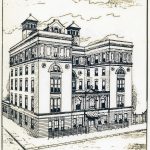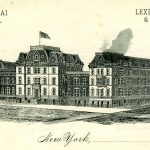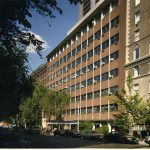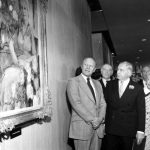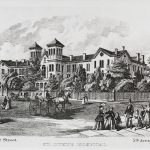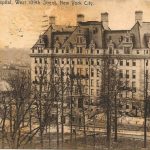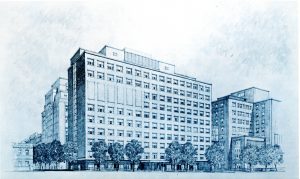Building Beth Israel, Part 1: Foundations
The first meeting related to the founding of Beth Israel Hospital was held on December 1, 1889 at 165 East Broadway. Healthcare was greatly needed in New York’s Lower East Side, whose residents, largely recent Jewish immigrants, were affected by poverty, close living quarters, and dangerous working conditions. From a 1901 essay on early Beth Israel history:
“The origin of the idea of this institution sprang from the poor themselves. So urgent was the need for such a local hospital, that in spite of the lack of support, and even of the discouragement of those in position to assume such a task, the poor themselves, by taxing their hard earned [sic] wages, gained by the sweat of their brows, established the association and undertook to support the Hospital…It serves to demonstrate the noble Jewish heart. These workingmen when they could earn their bread and butter were willing to contribute their 25 cents a month to help their neighbors in distress.”
In the face of “meagre [sic] and uncertain support,” the founders first endeavored to begin a dispensary, rather than a full-scale hospital, and in May 1890, rented a loft in a factory on Birmingham Street. (This street no longer exists, but today would be between Henry Street and Madison Street, just underneath the Manhattan Bridge.) The building was described as “most unsuitable and the accommodations about as poor as can be imagined” but still attracted more patients than could be treated, speaking to the great need for medical care in this neighborhood at the time.

Click here for an interactive map of Beth Israel historical locations
After two months at the Birmingham Street location, the Beth Israel outpatient dispensary moved to 97 Henry Street in July 1890. Described as an “old-fashioned parlor floor,” it was “much better situated” and the dispensary remained there for ten months.
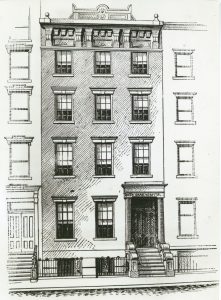
Sketch of the 206 E Broadway location of Beth Israel Hospital, circa 1892-1902.
In May 1891, Beth Israel moved to 196 East Broadway. With twenty beds, this is the first Beth Israel location to include inpatient services in addition to the outpatient dispensary. The hospital includes two house staff: Abraham Hymanson, MD, is the first House Physician, and Wolfgang Kaplan, MD is Assistant House Physician.
Embroiled in a financial crisis, Beth Israel moves again in May 1892, splitting their services across buildings at 206 East Broadway and 195 Division Street. With lower rent and more space, including thirty-four beds, Beth Israel was financially solvent for the first time. The Division Street building was renovated one floor at a time for inpatient and outpatient use.
Beth Israel Hospital remained in this location for over a decade, before moving to its location at Jefferson and Cherry Streets in 1902, and finally its current location at the Dazian Pavillion in Stuyvesant Square in 1929. The history of both of these Beth Israel Hospital locations will be addressed in future posts.
Sources:
- Board of Directors minutes, December 1, 1889
- Early Beth Israel Hospital at 206 East Broadway
- Essay on History of Beth Israel during Construction of Jefferson & Cherry St. Building – Typescript Original
- Levitan, Tina. Islands of compassion, a history of the Jewish hospitals of New York. New York: Twayne Publishers, 1964.
Authored by Stefana Breitwieser, Digital Archivist

